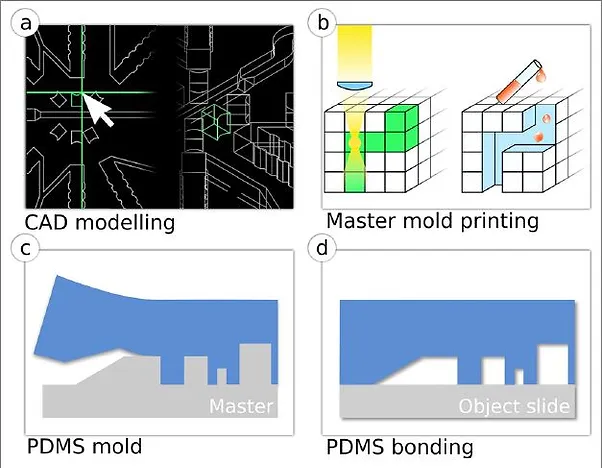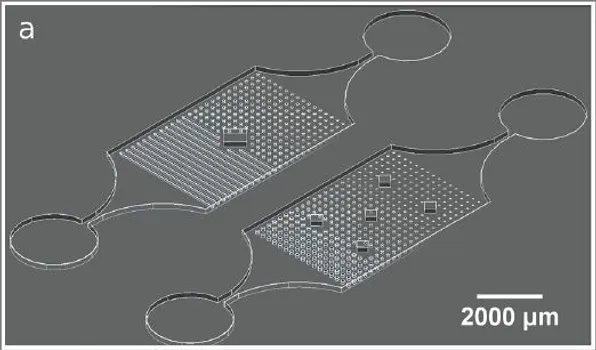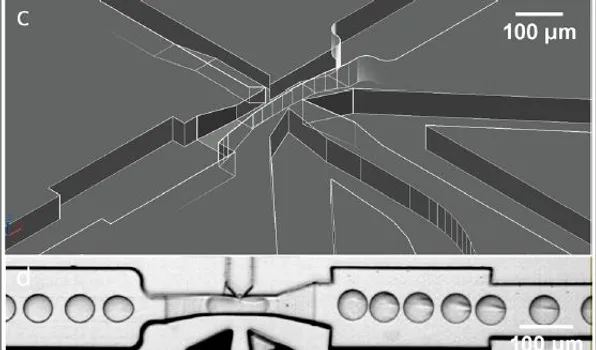Researchers of the Leibniz Institute for Natural Product Research and Infection Biology in Jena, Germany, have realized complex three-dimensional PDMS chips for droplet microfluidics out of 3D-glass molds fabricated with the innovative FEMTOPRINT® technology. The direct writing process allows sub-micrometric resolution and to realize microfluidic designs with multiple levels or even continuously changing heights and complex 3D shapes. Together with the simplicity of PDMS replica molding, this approach has provided an accessible solution for both specialized and non-specialized labs to customize microfluidic experimentation and expand the experiment possibilities.

3D-glass molds integrate the advantages of high resolution prototyping with the ease of production and replication offered by soft lithography. It also facilitates the manufacture of multilevel structures, even with the generation of ramps (gradients of confinement), which greatly improved key droplet microfluidic operations. This technique enables novel possibilities that can be exploited not only with droplets, but in many other applications of microfluidics.

The 3D-glass structures present a negative part. It is also possible to bond them to glass or a PDMS slab for direct usage as chips, thus allowing the utilization of structures that cannot be reproduced with replica molding (e.g., microstructures in the channels or optical elements like waveguides, mirrors, filters, lenses, etc.). Given these possibilities, chip fabrication is no longer the bottleneck for the adoption of microfluidic approaches - specially by non-microfluidic labs -but rather an opportunity for the implementation of novel functionalities. FEMTOPRINT® technology significantly expands the experimental capabilities of the droplet microfluidic chip. It allows direct fabrication of multilevel structures such as droplet traps for prolonged observation and optical fiber integration for fluorescence detection.
As the required gradual and/or large changes in channel depth can be easily and more precisely manufactured with this approach, the mold present 192 nozzles packed in a design of 25mm length and 4mm width including all inlets and outlets, generating monodisperse droplets of ø70 µm. The structure can be easily scaled to contain 1000 nozzles in a 6.5 cm structure.
Currently, there is no other straightforward methodology that would enable the production of such architecture with structures ranging from 15 µm to hundreds of micrometers in all dimensions and continuous changes in depth. Together with the simplicity of PDMS replica molding, this provides an accessible solution for both specialized and non-specialized labs to customize microfluidic experimentation and expand their possibilities.
A dedicated paper has been published on Biomicrofluidics 12, 024115 (2018).
